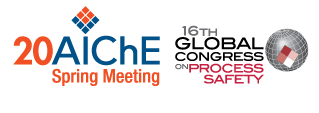

Crude oil distillation towers use a wash section to remove entrainment from the feed. This section requires wash (wetting) liquid to maximize performance and prevent the wash section from coking. This is a difficult control problem. The liquid rate has a sharp optimum. Too low a rate, and the wash section cokes, shutting down the unit. Too high a rate and significant yield or capacity losses can result. Being wrong in either direction has a high cost.
The liquid rate can be controlled by either direct measurement and control or by inferring a rate based on energy and mass balance around the unit and controlling a secondary stream. The direct measurement system has higher capital and operating costs. The indirect method has lower capital and operating costs, but has a higher risk of upsets and larger uncertainties.
This presentation reviews the results of Monte Carlo modeling of a crude unit to evaluate the economic benefits of the direct approach versus the uncertainties in the indirect approach.
Presenter(s)
Once the content has been viewed and you have attested to it, you will be able to download and print a certificate for PDH credits.
If you have already viewed this content,
please click here
to login.
